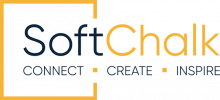Photo by Steinar Engeland via Unsplash
Classroom learning in higher education comes with its own challenges. As noted by previous studies, students enjoy in-person lectures even though they frequently lose attention and retain less information than they do with other forms of education.
The challenges presented by in-person lectures have led some professors and colleges to explore new teaching strategies. One effective approach is shifting lecture time toward active learning. Instead of relying solely on passive listening, instructors encourage student participation through group work, discussions, and interactive exercises to reinforce key concepts.
For distance education, this method can be particularly valuable, provided colleges have the right technological platform to build student engagement and support online learning.
How Can Interactive Learning Improve Distance Education?
One of the most significant challenges in distance education is ensuring that students remain engaged. Numerous academic studies repeatedly cite this issue as one of the primary barriers to effective online learning. Unfortunately, virtual classrooms create an environment where students’ attention can easily wander to other distractions. As a result, traditional lectures may lose their impact, leaving students less prepared and engaged.
By integrating interactive learning strategies into online courses, instructors can foster engagement through discussion-based activities, collaborative projects, and real-world applications of course material. Instead of passively absorbing content, students are encouraged to think critically, solve problems, and apply their knowledge in meaningful ways.
To support these efforts, eLearning platforms like SoftChalk provide professors with tools to design engaging instructional materials, ensuring students understand assignments and participate actively in online discussions and activities.
The Benefits of Hands-On, Interactive Lectures
As the name implies, hands-on lectures emphasize active engagement. In this approach, students participate in project- or task-oriented activities designed by their instructors. Rather than simply listening to a lecture, they immerse themselves in the learning process, reinforcing their understanding through interactive experiences.
This method allows for better use of class time by encouraging students to engage deeply with the material. By preparing in advance, they arrive ready to analyze, ask questions, and apply their knowledge. This also enables professors to identify students who may need additional support and provide personalized guidance.
While implementing hands-on lectures in an online environment presents challenges, modern digital tools help bridge the gap. Interactive assignments, discussion boards, and virtual collaboration tools create opportunities for engagement, even in a remote setting.
How SoftChalk Helps Create Effective Hands-On Lectures
Basic online platforms can create minimal engagement and group sessions. For a truly immersive educational experience, college administrators and professors must invest in robust technological tools for better student outcomes. As an award-winning platform in the digital innovation and education space, SoftChalk can help colleges with a digital tool that make hands-on lectures more successful.
SoftChalk comes with many benefits, including:
- Professional support for designing high-quality learning materials, best practices, and assessments.
- A Learning Object Repository with lessons from educators worldwide, offering inspiration and ideas for effective course design.
- An easy-to-use content authoring platform that allows professors—regardless of technical expertise—to create interactive course content.
- Portability and flexibility, ensuring students can access lectures and activities anytime, anywhere.
- Data-driven insights that help educators refine their lessons based on student performance and engagement metrics.
Ready to Learn More?
Active and interactive learning strategies can enhance student engagement and improve outcomes in both in-person and online settings. By leveraging modern eLearning platforms, educators can design courses that prioritize participation, collaboration, and deeper understanding. With the right tools, colleges can create dynamic, student-centered learning environments that drive success.


Leave a Reply